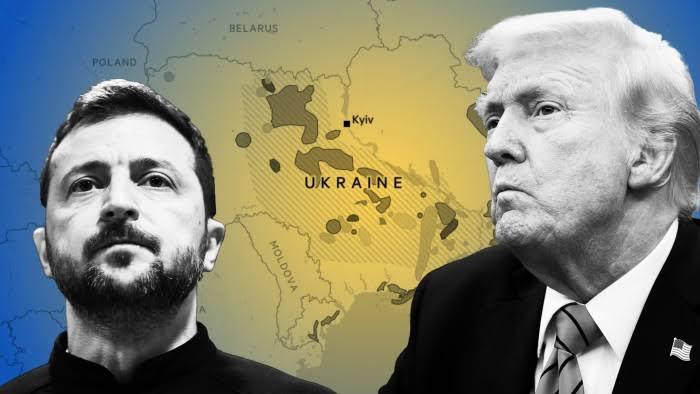
African Union’s Potential Governance for a Better Africa: A Streamlined Analysis
Did you ever wonder what force could ignite a continent’s destiny? The African Union (AU) stands at the crossroads of Africa’s most ambitious aspirations—peace, stability, and economic transformation. Born from the fiery struggle for self-determination and driven by an unyielding desire for unity, the AU is not merely an institution; it is a powerful symbol of hope, challenging old paradigms and ushering in a bold new era.
Imagine an organisation armed with robust data and a visionary mandate, poised to redefine Africa’s future. This analysis delves into the AU’s rich history, intricate governance, and groundbreaking milestones, inviting you to explore whether this dynamic body truly holds the key to transforming challenges into unprecedented opportunities. Are you ready to discover if the AU can unlock a better, more unified Africa?
I. Historical Background
Founded in 1963, the Organisation of African Unity (OAU)symbolised Africa’s liberation and self-reliance. However, its limited capacity to manage conflicts and uphold human rights led to the establishment of the AU in 2001 (officially launched in 2002). The AU’s Constitutive Act broadened its mandate to include intervention in cases of genocide, war crimes, and human rights abuses.
The AU was formed to:
● Enhance Conflict Resolution and Peacekeeping: Empowering intervention in grave crises.
● Promote Democratic Governance and Human Rights:Integrating democratic principles into its core mandates.
● Boost Economic Integration: Encouraging intra-African trade and development (e.g., through the African Continental Free Trade Area, AfCFTA).
● Foster Cultural and Social Unity: Building a common Pan-African identity.
II. Governance and Institutional Structure
The AU’s multi-tiered governance framework includes:
● Assembly of Heads of State and Government: The supreme body setting strategic direction and approving budgets.
● Executive Council: Comprising ministers (often foreign affairs), responsible for implementing high-level decisions.
● African Union Commission (AUC): The operational arm responsible for policy formulation, administration, and oversight.
● Pan-African Parliament (PAP): A consultative forum promoting citizen representation.
● Peace and Security Council (PSC): Focused on conflict prevention, crisis management, and peacekeeping.
● Specialised Agencies and Committees: Such as the African Court on Human and Peoples’ Rights and ECOSOCC, address sector-specific issues.
B. Leadership and Accountability
Leadership rotates among member states to ensure inclusivity. Accountability is maintained through audits, peer reviews, and evaluations, though consensus-based decision-making can slow rapid responses in emergencies.
III. Objectives and Mandates
A. Political, Economic, and Social Goals
The AU aims to:
● Unify the Continent Politically: Through conflict resolution and the promotion of democratic governance.
● Stimulate Economic Growth: By removing trade barriers (e.g., AfCFTA), investing in infrastructure, and realising the long-term vision of Agenda 2063.
● Enhance Social Cohesion: Through cultural exchange, public health initiatives, and the promotion of human rights.
B. Security, Environmental, and Health Priorities
The AU’s commitments include:
● Maintaining Peace and Security: Via peacekeeping missions and counter-terrorism strategies.
● Advancing Environmental Sustainability: Promoting renewable energy and sustainable resource management.
● Coordinating Public Health Responses: As seen in the management of Ebola and COVID-19 outbreaks.
IV. Decision-Making and Implementation
Decisions are made through extensive consultations in the Assembly and Executive Council, typically by consensus—with majority voting as a fallback when needed. This process is designed to balance swift action with respect for national sovereignty.
B. Implementation and Oversight
Once decisions are adopted, the AUC develops detailed operational frameworks, allocates resources, and monitors progress through periodic audits and evaluations. This system ensures continuous feedback and adjustment.
V. Challenges and Potential Solutions
Limited funding from member states impedes programme implementation. Potential solutions include:
● Reforming contribution systems based on economic capacity.
● Diversifying funding sources through international partnerships and public-private collaborations.
● Enhancing financial management and transparency.
Divergent national interests can hinder swift decision-making. Addressing this requires:
● Streamlined decision-making processes.
● Enhanced diplomatic engagement and conflict-resolution platforms.
● Strengthening regional organisations (e.g., ECOWAS, SADC) to support policy harmonisation.
Corruption and technical capacity deficits can slow progress. Solutions include:
● Capacity building and technical assistance.
● Robust monitoring and independent oversight.
● Greater involvement of civil society to ensure accountability.
VI. Milestones and Accomplishments
A. Peacekeeping and Conflict Resolution
The AU has successfully deployed missions in Somalia, the Central African Republic, and Mali, and has mediated conflicts in Sudan and Burundi, reinforcing its role as a peacekeeper.
B. Economic Integration and Development
Initiatives like AfCFTA and Agenda 2063 are paving the way for reduced trade barriers, increased investment, and improved infrastructure, setting a foundation for robust economic growth.
C. Social and Cultural Achievements
Through the promotion of human rights, democratic governance(e.g., via the African Charter on Democracy, Elections and Governance), and coordinated public health responses, the AU is strengthening social bonds and institutional accountability.
VII. Strategic Role and Future Prospects
By uniting political leadership and fostering economic initiatives, the AU elevates Africa’s profile globally and promotes sustainable investment in infrastructure and human capital.
A strengthened peacekeeping framework and coordinated counter-terrorism efforts protect member states and create an environment conducive to growth and development.
C. Policy and Legal Frameworks
Key accords—such as the Constitutive Act, the African Charter on Democracy, Elections and Governance, and the AfCFTA treaty—provide a solid legal foundation for the AU’s policies and initiatives.
VIII. Conclusion
The African Union stands as a transformative institution with the potential to guide Africa towards a future of stability, prosperity, and unity. While challenges such as funding limitations, political fragmentation, and implementation gaps remain, ongoing reforms and robust oversight mechanisms provide a pathway forward. A renewed commitment from member states, civil society, and international partners is essential to fully realise the vision of a unified and thriving Africa.
“When collective aspirations are channelled through effective governance, even the most daunting challenges become surmountable.”
This analysis calls for continued dedication to Pan-African ideals, ensuring that the AU’s evolving governance model can meet the continent’s aspirations for a better future.
Aric Jabari is the Editorial Director of the Sixteenth Council.



